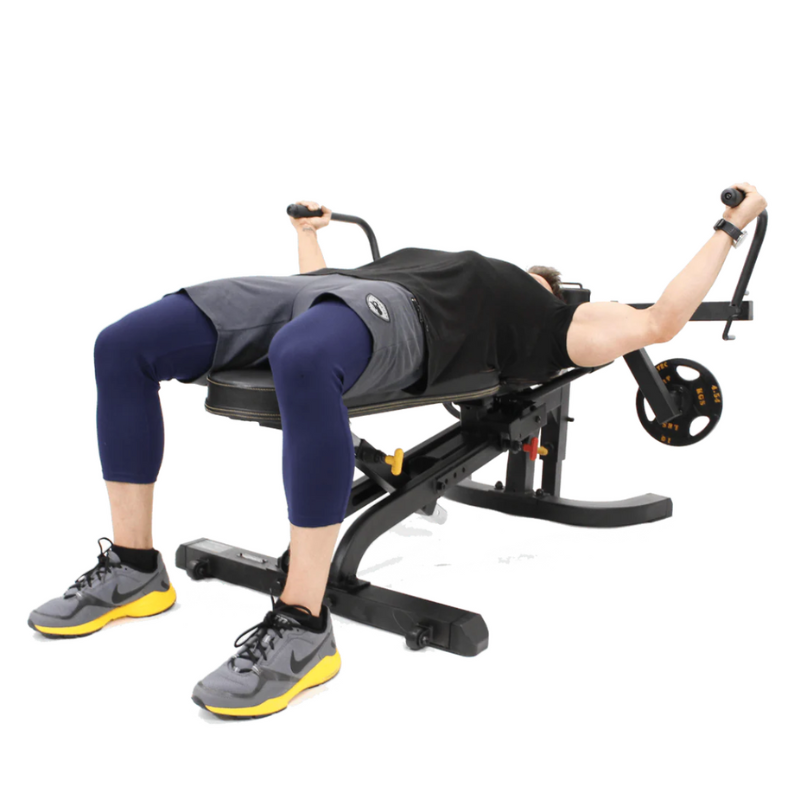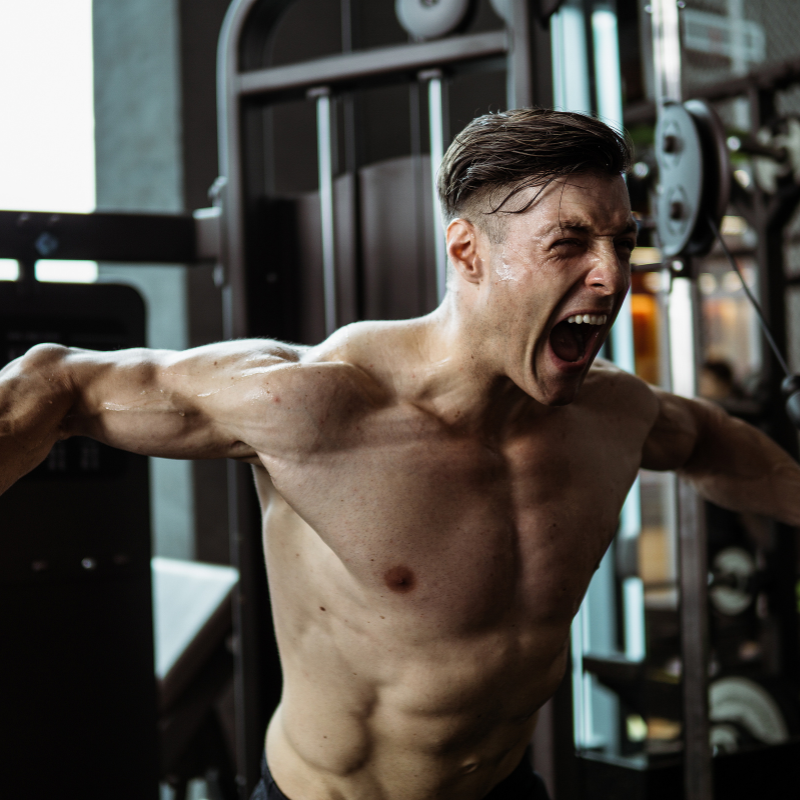Chest flyes are a popular exercise that targets the pectoral muscles in your chest, typically used with machines, dumbbells, or cables. When performed properly, they can strengthen your chest, shoulders, and back to improve posture and support a wide range of pressing movements.
In this blog, we'll cover proper form, technique, equipment recommendations, and common mistakes to avoid so that you can integrate chest flyes into your routine for maximum impact.
Let's start by understanding the key benefits this exercise provides.
Understanding Chest Flyes and Their Benefits
Targeting Pectoral Muscles
The prime movers in the chest fly are the pectoralis muscles. As you extend your arms out to the sides and squeeze them together, you generate peak contractions in these chest muscles. Whether your goals are muscle growth, strength gains, or physique sculpting, chest flyes train the pecs through a wide range of motion.
Strengthening Deltoids
In addition to your pectoral muscles, chest flyes engage your anterior deltoids. As you raise your arms up and outward, you'll feel a stretch through the fronts of your shoulders. This makes flyes an excellent complement to pressing movements that target other areas of the delts.
Improving Posture
By strengthening muscles in your chest and shoulders, chest flyes can help improve posture over time. This is especially true if tight pecs or weak upper back muscles cause you to slouch forward. Incorporating chest flyes into your routine may contribute to better spinal alignment and a more upright stance.
Tip 1: Equipment for Chest Flyes: Powertec Workbench Pec-Fly Attachment

To execute chest flyes effectively and safely at home, proper equipment is essential. Powertec offers a superior Pec-Fly attachment compatible with their range of workbenches.
Features and Benefits
The Powertec Workbench Pec-Fly Attachment offers a noticeable pectoral workout starting from the very first repetition. Its design features independent arms for isolating each side of the chest, similar to dumbbell flyes, but with a superior and safer range of motion.
This sturdy fly attachment is versatile enough to serve both newcomers and veteran lifters, providing a safe and efficient way to intensify chest training without the need for a spotter during heavy pressing movements.
Compatibility with Powertec Workbenches
The Pec-Fly machine is tailored for seamless integration with Powertec workbenches. It attaches effortlessly to the Workbench LeverGym®, Workbench Multisystem®, and compatible Powertec bench models, broadening your workout repertoire.
Constructed from stainless steel to ensure longevity, the attachment arrives in a single package, designed for quick and straightforward assembly.
Tip 2: Proper Form and Technique for Chest Flyes

The key to maximizing chest activation without injury is using proper form. Here are some form tips:
-
Load the Pec-Fly machine with your desired weight. Ensure each arm has an equal amount of weight.
-
Position yourself on a bench with your back flat and your feet securely grounded.
-
Maintain a soft bend in your elbows to avoid strain throughout the exercise.
-
Grip the Pec-Fly machine handles and slowly open your arms downward to the sides in a wide arc.
-
Activate your chest muscles to guide your arms back to the starting position.
-
Ensure a smooth, controlled motion, avoiding elbow lockout.
Maintaining tension and using controlled form is crucial, especially as you reach muscle fatigue toward the end of a set. Don't sacrifice form to lift more weight or perform more reps.
Tip 3: Common Mistakes to Avoid for Effective Chest Flyes

While chest flyes seem straightforward, poor form can limit results or cause injury. Here are some common mistakes to avoid:
-
Overextension: Refrain from pulling your arms excessively behind you to prevent shoulder joint strain. Maintain a gentle elbow bend and a safe range of motion.
-
Excessive Load: Selecting weights that are too heavy can lead to poor technique and hinder your range of motion. Opt for lighter weights that allow a controlled, full movement path.
-
Neglecting Control: Don't let the weights fall under gravity's influence. Sustain pectoral tension to ensure fluid, deliberate motion throughout. This meticulous form helps avert injuries.
Integrating Chest Flyes into Your Workout Routine
Now that you know how to properly perform chest flyes, here is how to incorporate them into your routine:
Frequency and Repetition Recommendations
We recommend performing chest flyes 2-3 times per week for optimal results. Aim for 3 sets of 10-15 reps per set. Allow at least 1 day of rest between chest fly workouts to enable full recovery.
As you build strength, increase the weight incrementally. Maintaining proper form and full range of motion is vital, even as the weights get heavier over time.
Combining with Other Chest Exercises
For a well-rounded chest routine, combine flyes with pressing and squeezing movements like:
-
Barbell bench press
-
Incline bench press
-
Push-ups
-
Cable crossovers
Flyes make an excellent accessory lift after your main multi-joint pressing exercise. This movement targets the pecs with an extensive motion, offering benefits beyond what compound exercises alone provide.
Frequently Asked Questions
How can I progress with chest flyes over time?
To progress, increase reps up to 20 per set, add sets up to 5 total, and incrementally increase weights as strength allows without compromising form. Reducing rest times also increases difficulty.
Are chest flyes suitable for beginners?
Yes. Chest flyes are suitable for beginners when performed with proper form using lighter weights. Work up slowly in weight and volume.
How to Finance Your Fitness Journey
We offer flexible financing options to help you invest in your ideal home gym setup. Contact us at Powertec to learn about payment plans that suit your budget and fitness goals.
Let us help you build your personalized home gym, one step at a time.



Leave a comment